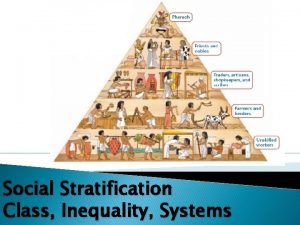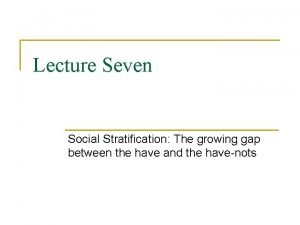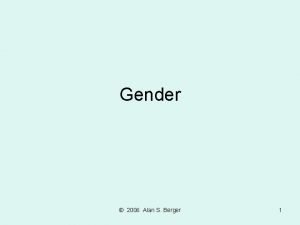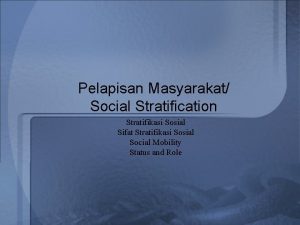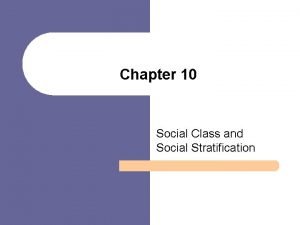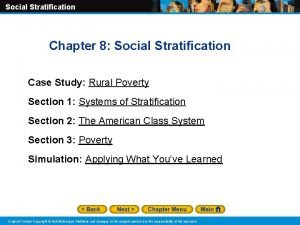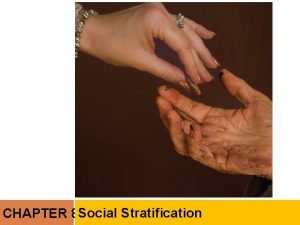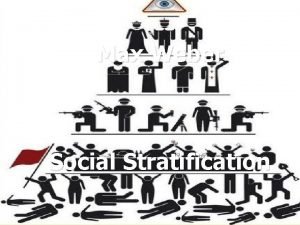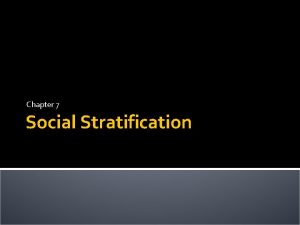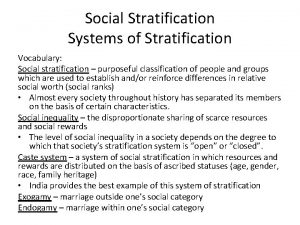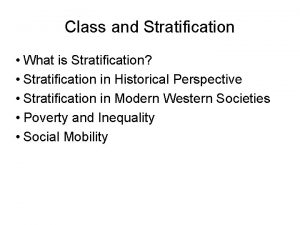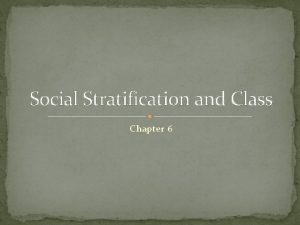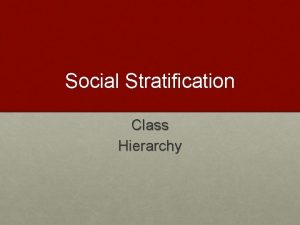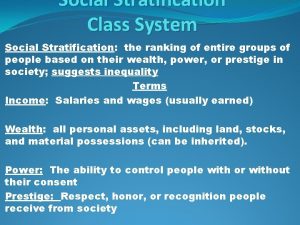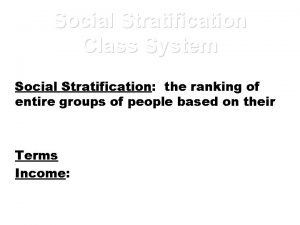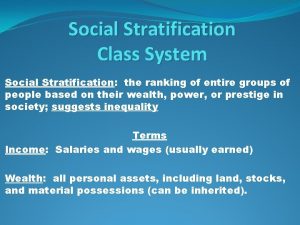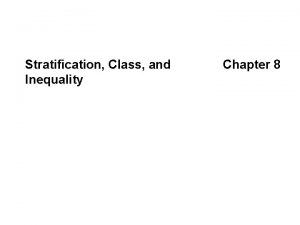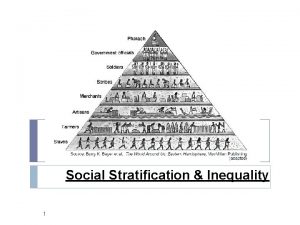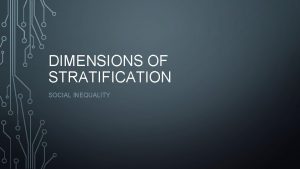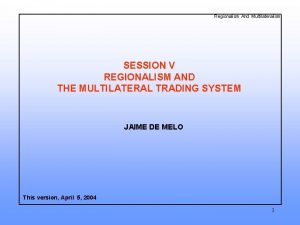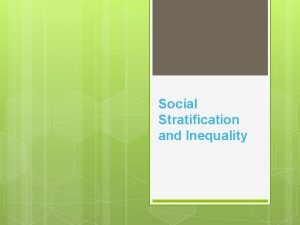Social stratification social class and regionalism August 25
















- Slides: 16

Social stratification, social class, and regionalism August 25, 2004

Social order and differentiation § How is social order maintained in the face of social differentiation? § Differentiation occurs first of all on the basis of ascriptive characteristics: sex, age, strength, etc.

Social order and differentiation, cont. § There is no social group, no matter how small, in which the individuals who comprise the group are equivalent. § Dyad § Triad § Which is the more stable?

Differentiation at the societal level § Social class § Marx’s definition: relationship to the means of production § Importance of social class § Social mobility § Structural and perceptual indicators

Inequality of income distribution § Definition of inequality of income distribution: § The ratio of total income received by the 20% of the population with the highest income (top quintile) to that received by the 20% of the population with the lowest income (lowest quintile)

Income inequality statistics § Income inequality: § EU § Italy § UK § US 4. 4 4. 8 4. 9 13. 6 Countries with lowest ratios? EUROSTAT

Perceptual indicators of inequality § “Differences in income in my country are too high” § Italy § US 53% 27%

Perceptual indicators of inequality § For getting ahead in life: § “Coming from a wealthy family is very important § Italy § US 40% 14%

Perceptual indicators § “Having political connections is very important” § Italy § US 55% 9% § “Hard work is very important” § Italy § US 57% 89%

Income inequality and social class § Income inequality isn’t the only determinant of social class differentiation. § WHAT ELSE MATTERS?

Social class, cont. § Cultural division of labor § “Familial” division of labor

Occupational distribution § Employment by sector in Italy § Services § Industry § Agriculture 66% (EU 70) 30% (EU 25) 4. 8% (EU 4. 2)

Unemployment rates § § Italy EU UK US 9. 4 7. 4 5. 0 6. 4 § Of persons less than 25 years of age § Italy 28% § EU 15%

Poverty in Italy § 12% of households and 13% of individuals live in poverty. How is poverty distributed? § By region § 65% in South (33% of households are in the S) § 23% in North (48%. . . ) § 12% in Center (18%. . . )

Poverty in Italy § Other social characteristics § Size of household § Presence of children § Age § Sex § Education

Conclusion § Social stratification and social class are relevant at all levels of analysis § For an individual § For a group § For a region § For a country IMPORTANT DETERMINANT OF A COUNTRY’S STATUS IN THE WORLD ECONOMY, ATTAINMENT OF A GROUP, LIFE CHANCES OF AN INDIVIDUAL
 Social classes in social stratification
Social classes in social stratification Social stratification vs social inequality
Social stratification vs social inequality The societal tendency toward class stratification
The societal tendency toward class stratification The societal tendency toward class stratification
The societal tendency toward class stratification Gender stratified
Gender stratified Difference between regionalism and federalism in a sentence
Difference between regionalism and federalism in a sentence Jean courbet
Jean courbet Realism regionalism
Realism regionalism Regionalism literary movement
Regionalism literary movement Local color literature
Local color literature Mixed social stratification
Mixed social stratification Regular expression symbols
Regular expression symbols Dimensions of social class
Dimensions of social class Social inequalities examples
Social inequalities examples Chapter 8 social stratification
Chapter 8 social stratification Social stratification dimensions
Social stratification dimensions Max weber social stratification
Max weber social stratification
